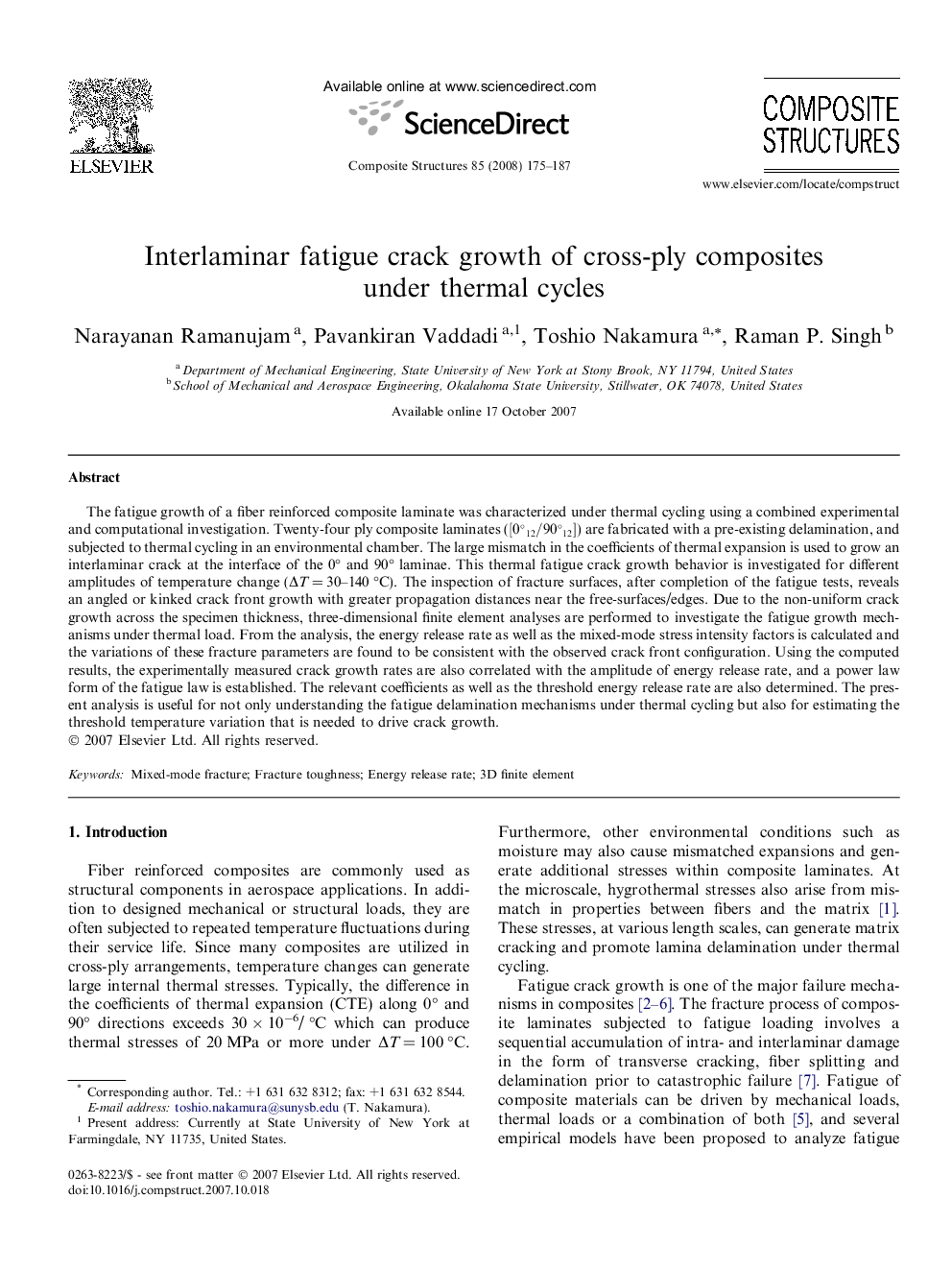| Article ID | Journal | Published Year | Pages | File Type |
|---|---|---|---|---|
| 253833 | Composite Structures | 2008 | 13 Pages |
The fatigue growth of a fiber reinforced composite laminate was characterized under thermal cycling using a combined experimental and computational investigation. Twenty-four ply composite laminates ([0°12/90°12][0°12/90°12]) are fabricated with a pre-existing delamination, and subjected to thermal cycling in an environmental chamber. The large mismatch in the coefficients of thermal expansion is used to grow an interlaminar crack at the interface of the 0° and 90° laminae. This thermal fatigue crack growth behavior is investigated for different amplitudes of temperature change (ΔT = 30–140 °C). The inspection of fracture surfaces, after completion of the fatigue tests, reveals an angled or kinked crack front growth with greater propagation distances near the free-surfaces/edges. Due to the non-uniform crack growth across the specimen thickness, three-dimensional finite element analyses are performed to investigate the fatigue growth mechanisms under thermal load. From the analysis, the energy release rate as well as the mixed-mode stress intensity factors is calculated and the variations of these fracture parameters are found to be consistent with the observed crack front configuration. Using the computed results, the experimentally measured crack growth rates are also correlated with the amplitude of energy release rate, and a power law form of the fatigue law is established. The relevant coefficients as well as the threshold energy release rate are also determined. The present analysis is useful for not only understanding the fatigue delamination mechanisms under thermal cycling but also for estimating the threshold temperature variation that is needed to drive crack growth.
